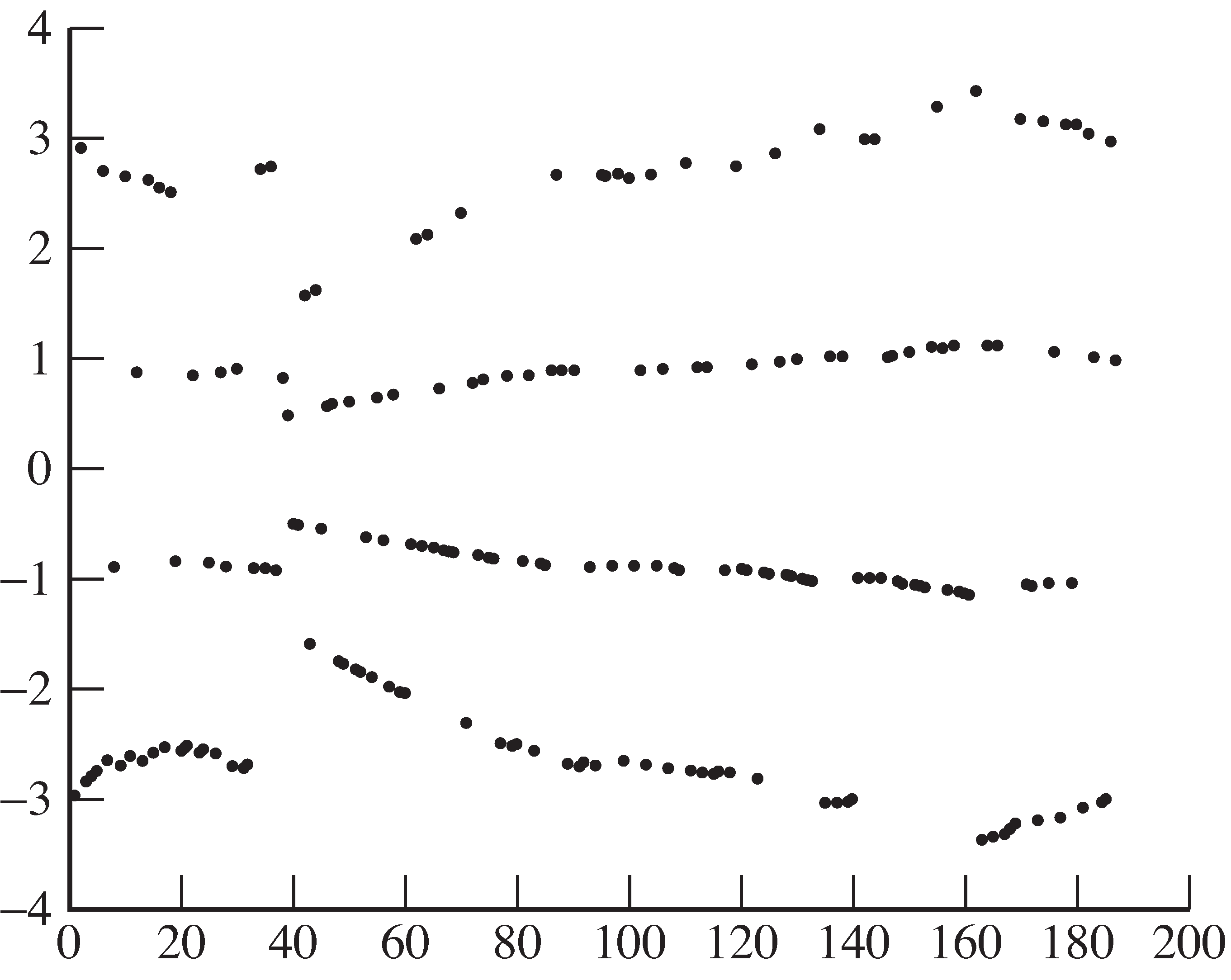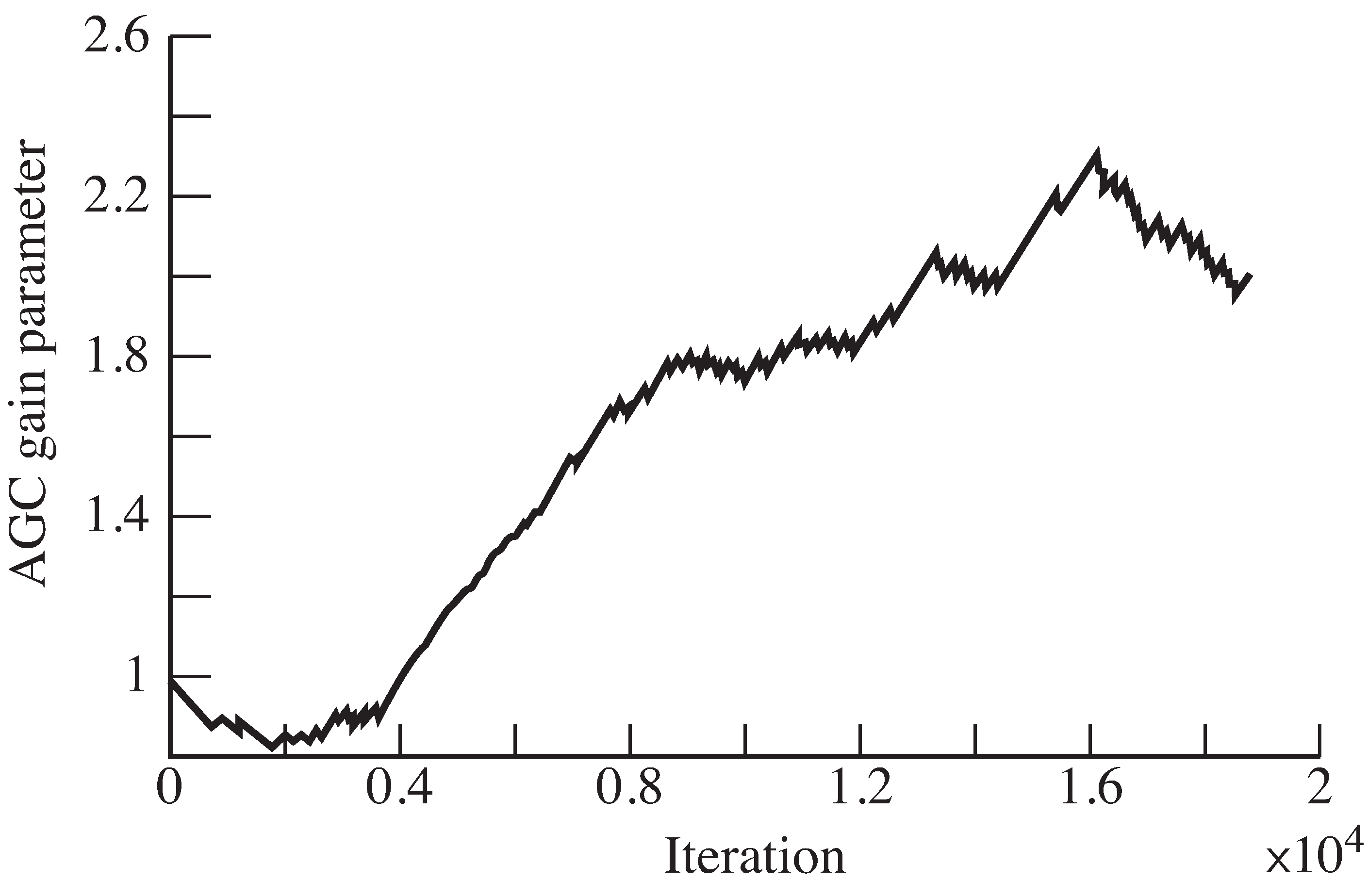| << Chapter < Page | Chapter >> Page > |
[link] plots the trajectory of the AGC gain
g as it moves from the vicinity of
unity to the vicinity of 2 (just what is needed to counteracta 50% fade).
Increasing the stepsize
mu can speed up this transition,
but also increases the range of variability in the gainas it responds to short periods when the square of the received signal
does not closely match its long-term average.


Another idealized assumption made in
idsys.m is that the receiver knows the start of each frame; that is, it
knows where each four-symbol group begins. This is a kind of“frame synchronization” problem and was
absorbed into the specification ofa parameter
which appears in the code as
0.5*fl+M . With the default settings,
is 125.
This problem poses the question. “What if this isnot known, and how can it be fixed?”
idsys.m , that the message
becomes scrambled if the receiver is mistakenabout the start of each group of four. Add a random
number of 4-PAM symbols before the messagesequence, but do not “tell” the receiver that you
have done so (i.e., do not change
).
What value of
would fix the problem?
Can
really be known before hand?Of course, a fading channel is not the only thing
that can go wrong in a telecommunication system.(Think back to the “what if” questions in the first section
of this chapter.)This section considers a range of
synchronization and interferenceimpairments that violate the assumptions of the idealized system.
Though each impairment is studied separately(i.e., assuming that everything functions ideally
except for the particular impairment of interest),a single program is written to simulate any of the
impairments.The program
impsys.m leaves both the transmitter
and the basic operation of the receiver unchanged;the primary impairments are to the sampled sequence
that is delivered to the receiver.
The rest of this chapter conducts a series of experiments dealing with stuff that can happen to the system.Interference is added to the received signal as additive gaussian channel noiseand as multipath interference. The oscillator at the transmitter is no longer presumed to be synchronized with the oscillator at the receiver.The best sample times are no longer presumed to be known exactly in either phase or period.

Notification Switch
Would you like to follow the 'Software receiver design' conversation and receive update notifications?